
Presentation of 1959 season
In 1959, the tenth Formula-1 World Championship took place. The technical regulations remained unchanged from the previous season, and cars with naturally aspirated engines with a displacement of up to 2.5 liters were still eligible to compete in Grand Prix events. The points system also stayed the same: 8-6-4-3-2 points for the first five places in the race (plus 1 point for the fastest lap), however, as the championship calendar was reduced to eight rounds this year, only the five best results counted - both in the Drivers' Championship and in the Constructors' Cup. Moreover, for the first time since 1953, the season was opened not by the Argentine Grand Prix, which was not held this year, but by the Monaco Grand Prix, followed by the stages in the Netherlands, France, Great Britain, Germany, Portugal, Italy and the USA.
Teams
Scuderia Ferrari
Last season, the Maranello team, equipped with the new Ferrari 246 Dino cars, managed to make a significant step forward and return to the leading positions in Formula 1, however, the achieved successes came at a very high price. Having won in France and gained a number of second places, Ferrari leader Mike Hawthorn still managed to score one more point in the championship than Stirling Moss of Vanwall and thus brought the Scuderia their fourth championship title, however, the scarlet team had to pay for this with the lives of Luigi Musso and Peter Collins, who were involved in fatal accidents during the French and German Grands Prix respectively. Meanwhile, since Hawthorn himself also decided to end his career at the end of the season, the Maranello team in 1959 was faced with the need to almost completely renew their lineup, and as a result, the Scuderia's new drivers were the experienced Jean Behra and Tony Brooks, as well as Cliff Allison, who moved from the Lotus team, while the only previous representative was the American Phil Hill. As for the racing cars, they underwent a major upgrade during the off-season and, following the changes, received a new designation – Ferrari 256. In an effort to extract every ounce of performance from the V6 engines, the engineers increased their displacement to 2,474 cc, which brought an extra 20 hp and raised their output to an impressive 295 hp. In addition, building on the successful use of disc brakes at the end of the previous season, they were now fitted in all four wheels of the new cars, and thus the era of drum brakes for the Scuderia was finally a thing of the past. The rear suspension, while retaining the De Dion layout, was also redesigned, now featuring coil springs and telescopic dampers, while the old four-speed gearbox gave way to a new five-speed unit. Meanwhile, the bodywork was also refreshed with more elegant and streamlined lines, brought to life in metal by the craftsmen of the Fantuzzi workshop. Finally, the last touch in the 256’s modernization came with the Commendatore’s decision to change tyre supplier: after four years of cooperation with Englebert, the team switched to British Dunlop tires.
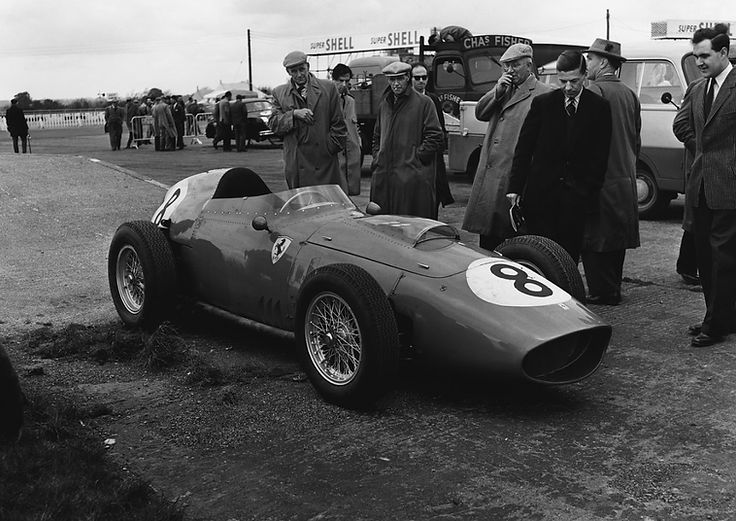
Ferrari 256
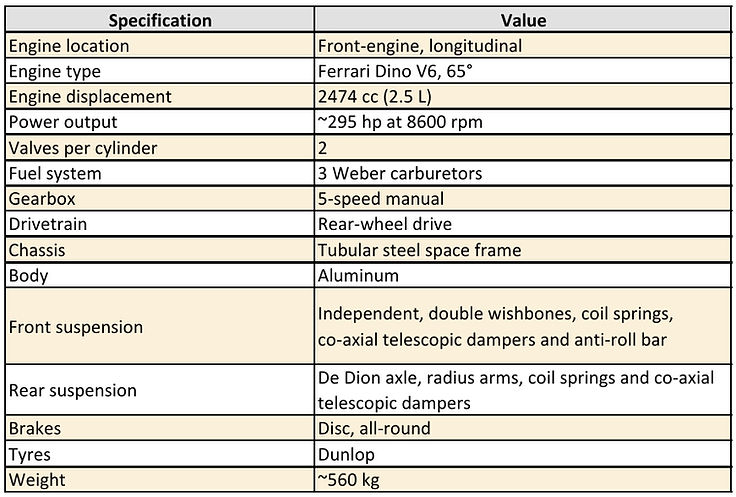
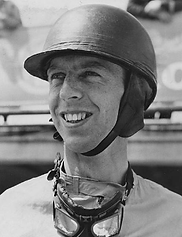
Tony Brooks
27-year-old Englishman who took 3rd place in the 1958 F1 World Championship. Last year, Tony had been very impressive as the second driver for the Vanwall team, winning three World Championship rounds in Belgium, Germany and Italy, which not only allowed him to make a significant contribution to the British team's triumph in the Constructors' Cup, but also brought him an excellent third place in the overall standings. Unfortunately, after the death of Brooks' teammate Stuart Lewis-Evans at the final round in Morocco and subsequent health problems, Vanwall boss Tony Vandervell had to wind down his team's racing activities, which effectively left Brooks with no choice but to look for a place in other stables. At the same time, the Englishman's impressive achievements did not go unnoticed by Enzo Ferrari, who at that time was looking for a replacement for his champion Hawthorn, and after negotiations with Tony, the Commendatore had no doubt that he could become a worthy alternative to Mike. Thus, having moved to the red camp, Brooks has every opportunity to continue his winning ways this year, and there is no doubt that the Englishman will do everything possible to ensure that the championship title remains with the Scuderia again.
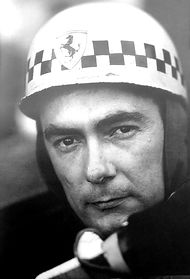
38-year-old Frenchman, who took 4th place in the 1956 F1 World Championship. Last season, Jean took on the role of lead driver for the BRM team, however, their cooperation did not bring the desired results. Having faced many technical problems during the season, Jean managed to bring the British team only one podium in the Netherlands and scored only 9 points, which ultimately allowed him to take only 11th place in the overall standings. Nevertheless, despite the rather modest results, Jean was still considered one of the strongest Formula 1 drivers, and this was the decisive factor that convinced the Commendatore to sign a contract with the Frenchman. There is little doubt that, with a championship-winning car at his disposal, Jean will finally have the opportunity to fully demonstrate his potential - and it is quite possible that Ferrari will be the machine to bring him his long-awaited first Formula 1 victory.
Jean Behra
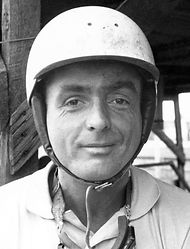
32-year-old American who took 10th place in the 1958 F1 World Championship. A factory driver for the Scuderia in sportscar racing, Phil finally got his chance to try his hand at the wheel of a Formula 1 car last year, and it can be said that his debut was extremely successful: in the last two Grands Prix of the season, the American won two podiums, while in Morocco, Hill drove an absolutely brilliant race, making an invaluable contribution to the Scuderia's final victory in the world championship. Having earned the highest approval of the Commendatore for his exploits, Phil will spend his first full season in Formula 1 with the Scuderia this year, and given his talent, there is no doubt that he will be one of the main heroes of the upcoming championship.
Phil Hill
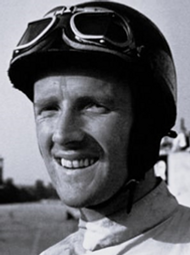
27-year-old Englishman, who took 15th place in the 1958 F1 World Championship. Last year, Cliff spent his debut season in Formula 1 with Colin Chapman's team, and despite the Lotus cars lagging behind their rivals, the Englishman still managed to drive several truly impressive Grand Prix and earn his first points. These successes did not go unnoticed by the Commendatore, who, after the tragic year of 1958, needed new talent more than ever, and thus, in his second season in Formula 1, the Englishman will have the chance to drive for the most legendary team in the championship.
Cliff Allison
Cooper Car Co
Last year, the Surbiton team managed to demonstrate significant progress, and thanks to the consistent performances of Roy Salvadori, they not only claimed their first podium finishes in Formula-1 but also secured an impressive 3rd place in the Constructors’ Cup. However, despite these achievements, John Cooper was not going to stop there and, together with chief designer Owen Maddock, he continued to actively work on improving his cars, and already at the beginning of 1959, their latest creation was unveiled: the Cooper T51. The defining feature of this racing car was the new 2.5-liter 4-cylinder Coventry Climax FPF engine, which developed a power of about 240 hp and which could rightfully be called the first full-fledged Formula 1 power unit installed on Surbiton cars. At the same time, like all its predecessors, the T51 retained a rear-engine layout, which not only provided optimal weight distribution and excellent handling, but also contributed to a significant reduction in the weight of the car. As for the driver line-up, following Roy Salvadori’s decision to move to Aston Martin, the role of the undisputed team leader passed to Jack Brabham, while the Australian's new teammates were American Masten Gregory and young New Zealander Bruce McLaren.

Cooper T51
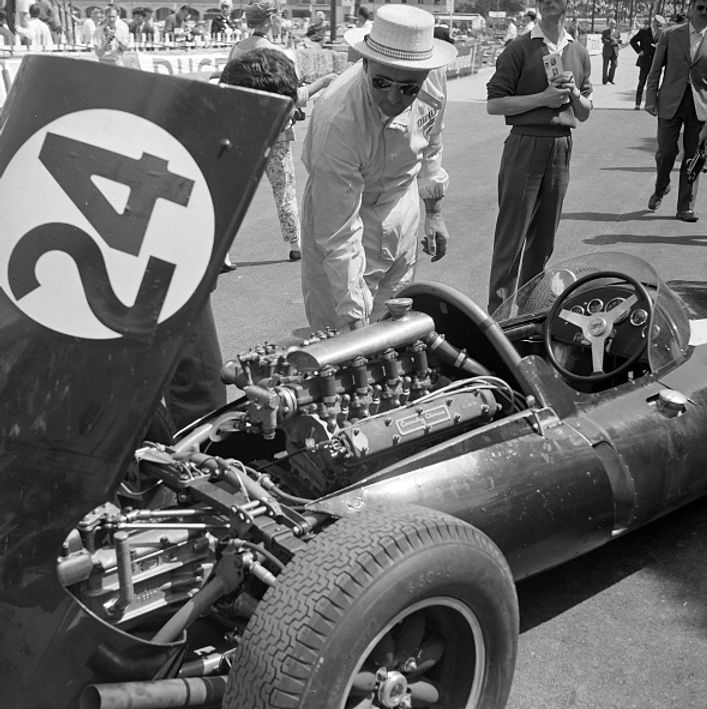

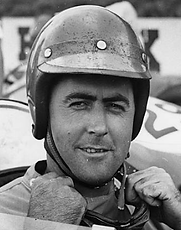
Jack Brabham
32-year-old Australian, who took 14th place in the 1958 F1 World Championship. Last year, Jack completed his second full season with the Cooper team, and it began on a promising note - the Australian finished fourth in Monaco, scoring the first championship points of his career. However, that was where his run of luck ended: as the season progressed, Brabham was steadily overshadowed by his teammate Roy Salvadori, who not only managed to bring Cooper their first podiums, but also took an impressive fourth place in the overall standings. Fortunately for the Australian, Salvadori decided to leave the Surbiton team in the off-season to join the legendary Aston Martin, effectively handing over the role of Cooper leader to his former teammate. Now, with the status of number one driver and the new, more advanced T51 car at his disposal, Jack will no doubt do everything he can to live up to expectations and it’s quite possible that we’ll soon witness his first truly major successes.
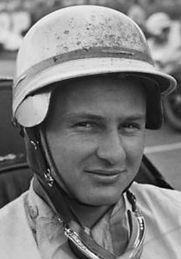
21-year-old New Zealander, a debutant in the F1 World Championship. Being one of the most promising racing drivers of New Zealand, Bruce came to the Old World last year as a protégé of Jack Brabham and immediately achieved impressive results in Formula 2, establishing himself as one of the leading contenders in the category. And his success did not go unnoticed: John Cooper, recognizing the potential of the young driver, decided to offer him a place in the main lineup of his Formula 1 team, and thus, Bruce will make his debut in the top league of motorsport this season, becoming the youngest competitor in the World Championship.
Bruce McLaren
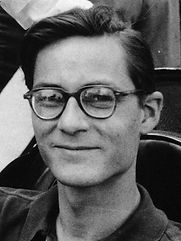
27-year-old American, who took 6th place in the 1957 F1 World Championship. Masten had spent the previous season as a private racer, driving a Maserati 250F, but despite his best efforts, he was unable to achieve any notable results and ended the championship without a single point. However, despite the lack of visible success, the American still had a reputation as one of the most promising young talents, and this was enough for John Cooper to choose him as the third driver of his rapidly developing team. Thus, by signing with Cooper, Masten will have his first opportunity to prove himself in a true factory team - and, perhaps, take a decisive step forward in his career.
Masten Gregory
Owen Racing Organization
Last season saw Alfred Owen's team make their third attempt to achieve success with their long-suffering BRM P25 cars – and chief designer Tony Rudd's efforts to improve them finally began to bear fruit. Although the P25s still lagged behind the championship frontrunners, the BRM drivers were increasingly able to demonstrate competitive pace and regularly score points, while in the Dutch Grand Prix Harry Schell and Jean Behra even managed to bring the Bourne team their first ever double podium, which was a truly remarkable achievement for them. At the same time, despite the cars' relatively simple design, the P25s continued to suffer from reliability issues, which significantly limited the team’s potential and ultimately prevented them from finishing higher than 4th in the Constructors’ Cup. Acknowledging that the cars’ main weaknesses lay in engine overheating and underperforming brakes, Rudd paid special attention to these areas during the off-season, and already at the beginning of 1959 the P25s received a modernized cooling system, while the front Lockheed disc brakes were replaced with more reliable analogues from Dunlop. As for the driver line-up, following Jean Behra’s move to Ferrari, the role of team leader was assumed by American Harry Schell, while his teammates were Swede Jo Bonnier and Scotsman Ron Flockhart.
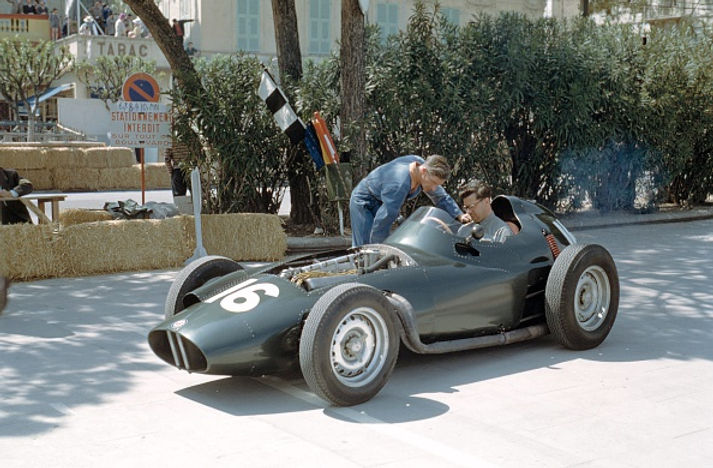
BRM P25

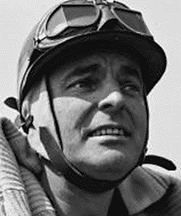
38-year-old American, who took 6th place in the 1958 F1 World Championship. Last season, Harry joined Alfred Owen's team and his partnership with BRM proved to be quite successful: the American regularly scored points, took a magnificent 2nd place at the Zandvoort track, which was the best result for both himself and the entire British team, while by the end of the season, Schell had secured a respectable 6th place in the overall standings, notably outscoring the team’s nominal leader, Jean Behra. Now that the Frenchman has left BRM, Harry has a great opportunity to try on the role of a full-fledged team leader, and there is no doubt that he will make every effort to achieve even more impressive results.
Harry Schell
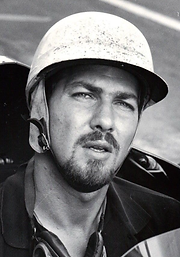
29-year-old Swede, who took 14th place in the 1958 F1 World Championship. Jo spent most of last season driving a Maserati 250F as a private racer, but despite his best efforts, the aging car failed to deliver results, leaving the Swede without a single point. Luckily for Jo, his performances did not go unnoticed by Alfred Owen, who needed a third driver for his team at the end of the season, and the Swede immediately lived up to his expectations, achieving 4th place in the Moroccan Grand Prix behind the wheel of the British car. Now, having earned a full-time seat with BRM, Jo will finally have the chance to realise his potential in a true factory team, and it’s quite possible that we’ll see him claim his first Formula-1 podium as early as this season.
Jo Bonnier
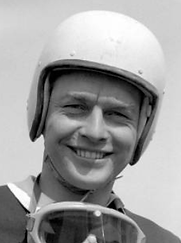
35-year-old Scotsman, who took 11th place in the 1956 F1 World Championship. Last season, as a reserve driver for BRM, Ron took part in just two Grands Prix - in Monaco and Morocco, both of which ended in failure for him. However, with Jean Behra leaving for Ferrari, Ron has finally had his chance to take his place in the British team's line-up, and now he has a real opportunity to come out of the shadows and show what he’s truly capable of.
Ron Flockhart
Team Lotus
Last year, Colin Chapman's team made their debut in the Formula 1 championship, and it must be admitted that their first season in the top league of motorsport was far from successful. Entering the Grand Prix scene with the new Lotus 16 bolids, Chapman had placed great hopes on them, however, in reality, these cars proved not only lacking in speed but also highly unreliable, ultimately preventing the team’s drivers from scoring a single point over the entire season. At the same time, to be fair, the British team did have one bright moment in 1958, at the Belgian Grand Prix, where Cliff Allison finished 4th, however, even this success was achieved due to an earlier Lotus 12 model. However, despite the lack of tangible results, Chapman himself remained convinced of the potential of his new cars and, rolling up his sleeves, he did a lot of work in the off-season to improve them. Like the Cooper team, they in Lotus received new 2.5-liter Coventry Climax FPF engines in 1959, which significantly improved the speed performance of the 16s and increased their top speed up to 260 km/h. Moreover, since most of the team’s retirements in 1958 had been caused by engine overheating, Chapman thoroughly reworked the cooling system, as a result of which the cars got new larger radiators and widened air intakes, as well as additional ventilation slots in the body. In addition, ahead of the new season, the Lotus engineers upgraded the rear transmission and clutch, while suspension components were reinforced and the engine mounting redesigned to reduce vibration and increase chassis rigidity. As for the driver lineup, it also underwent some changes: Graham Hill retained his place in the team, while Cliff Allison, who left for Ferrari, was replaced by his compatriot Innes Ireland.
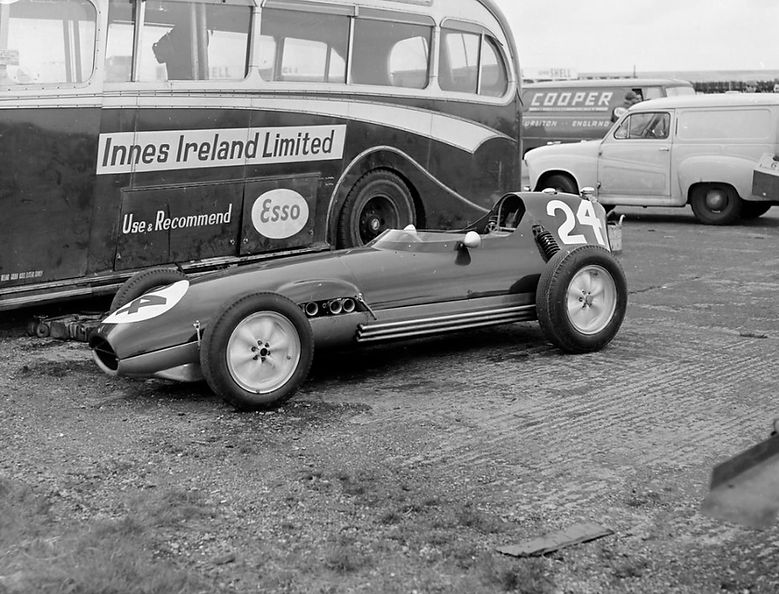
Lotus 16
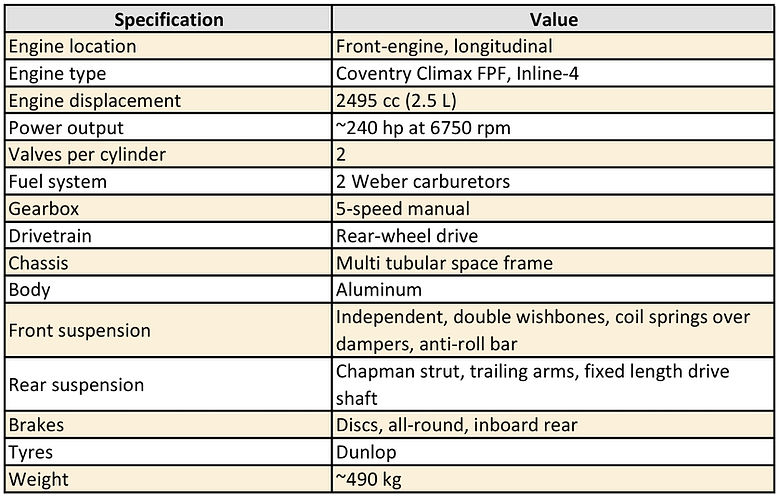
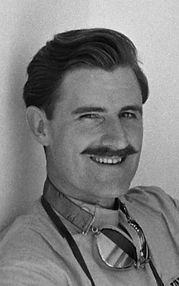
30-year-old Englishman, a participant in the 1958 F1 World Championship. Last season, Graham made his debut in Formula-1 with the Lotus team, however, unlike his teammate Cliff Allison, he failed to secure a single points finish, with his best result being 6th in the Italian Grand Prix. Nevertheless, despite a debut that was far from spectacular, Colin Chapman continued to value Hill’s abilities - both as an engineer and as a driver - and had no hesitation in extending his contract for another year. Now, with the upgraded Lotus 16 at his disposal, Graham will no doubt have the opportunity to prove himself and achieve more convincing results.
Graham Hill
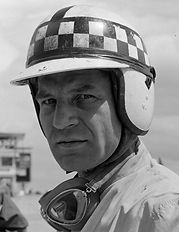
28-year-old Englishman, a debutant in the F1 World Championship. Possessing outstanding engineering skills and undeniable driving talent, Innes has achieved remarkable success over the past two years in sports car racing at the wheel of his own Lotus Eleven - earning the highest praise from Colin Chapman. Following his team’s challenging debut season in the World Championship, Chapman was in urgent need of drivers of such calibre and he wasted no time in offering Innes the seat vacated by Cliff Allison, who had moved to Ferrari. As a result, this year Innes will have the opportunity to take the wheel of a true Formula-1 car for the first time in his career and demonstrate his talent on an entirely new level.
Innes Ireland
David Brown Corporation
The legendary Aston Martin marque, which over the past decade has earned considerable fame in sports car racing, will make its Formula-1 debut this year under the leadership of its long-standing chief, David Brown. Brown had been contemplating an entry into the top league of motorsport for quite some time - since as early as 1955 - and by 1957 the idea began to take concrete form when the first single-seater in the company’s history, designated the Aston Martin DBR4, rolled out of the Tickford factory. The DBR4 was based on the highly successful DB3S sports car, from which it inherited not only a front-engine layout but also several key components, repositioned more compactly to fit the dimensions of a reduced single-seater body. The chassis was a simple spaceframe covered with aluminium panels, with independent double-wishbone suspension and coil springs at the front, and a De Dion axle at the rear. Power came from a reduced 2.5-litre version of the DB3S’s inline-six twin-cam engine, equipped with three Weber carburettors and producing around 280 hp. The car also featured an in-house Aston Martin five-speed gearbox, while braking was handled by Girling disc brakes. Initial testing of the DBR4 took place almost immediately after it was built in 1957, however, because the company’s main focus at the time remained on sports car racing, final development of the new single-seater took more than a year, and as a result, Aston Martin’s Formula-1 debut was postponed until 1959. As for the driver line-up, the first DBR4s were entrusted to Aston Martin’s established sports car drivers: Englishman Roy Salvadori and American Carroll Shelby.
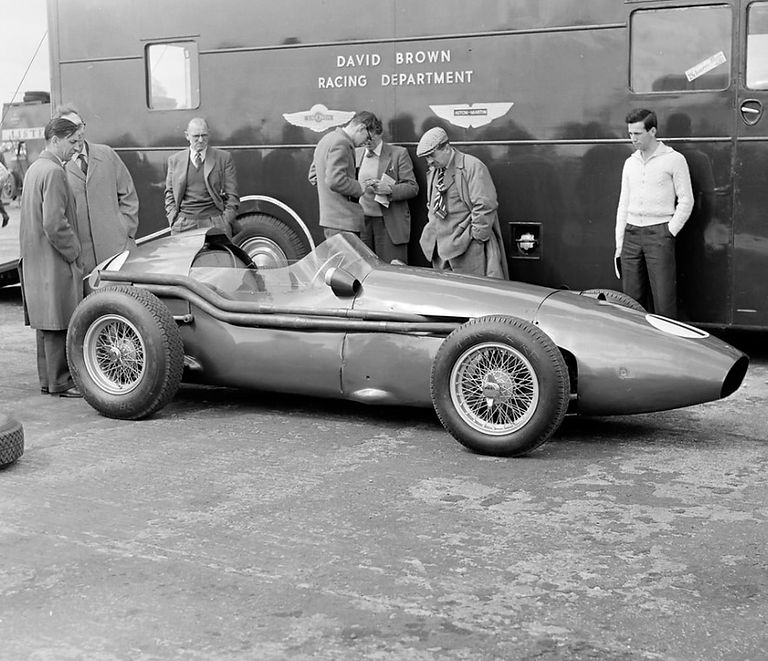
Aston Martin DBR4
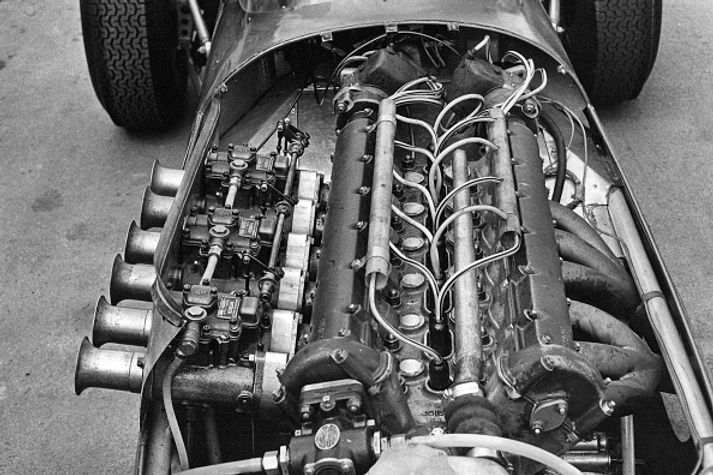
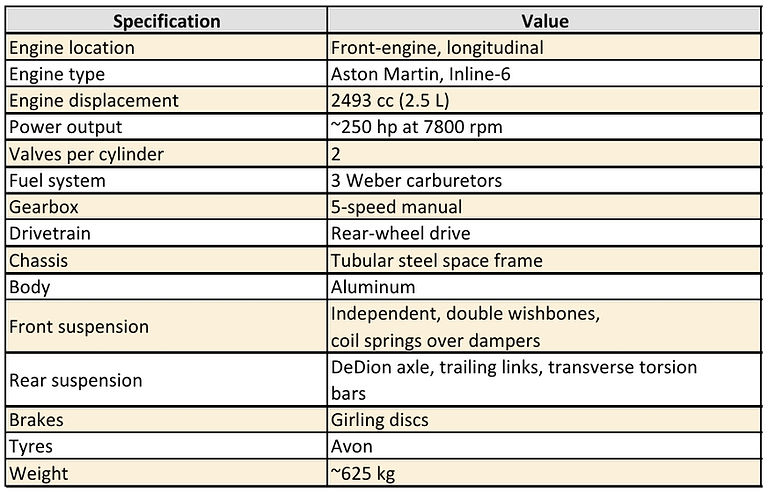
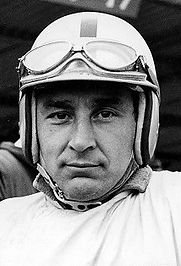
37-year-old Englishman, who took 4th place in the 1958 F1 World Championship. Last season, driving for the works Cooper team, Roy achieved truly brilliant results, including his first podium finishes at Silverstone and the Nürburgring, which ultimately earned the Englishman an excellent 4th place in the overall standings. Nevertheless, despite the obvious progress of the Surbiton team and his excellent relationship with John Cooper, Roy has chosen to join Aston Martin this year, hoping to contribute to establishing the legendary marque in Formula-1 – and only the end of the season will show whether this decision was justified.
Roy Salvadori
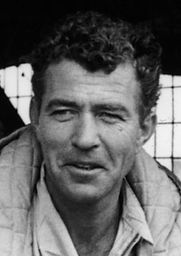
36-year-old American, a participant in the 1958 F1 World Championship. Last season, Carroll made his Formula-1 debut, competing in several Grands Prix behind the wheel of a Maserati 250F, though he was unable to achieve any notable success in any of them. Nevertheless, with Aston Martin entering Formula-1 this year, Carroll now has an excellent opportunity to continue his career with one of the most promising teams in the championship – and there is no doubt the American will try to use it to the fullest.
Carroll Shelby
R R C Walker Racing Team
Last year, Rob Walker’s team completed their first full season in Formula-1, and it can be said without exaggeration that it was a real breakthrough for them. Using the same Cooper T43 and T45 cars as the works Surbiton team, Stirling Moss and Maurice Trintignant managed to achieve brilliant victories at the first two rounds in Argentina and Monaco, and thanks to these triumphs, Walker’s team not only gained widespread recognition but also went down in motorsport history as the first private team to win a Formula-1 Grand Prix. However, for the new season, Walker hoped to achieve even more impressive results - and his expectations were well-founded. First, during the off-season, his team acquired new, more powerful Cooper T51 cars, which were almost identical to those used by Cooper’s works team (the only difference being the gearbox, specially designed for Walker by Italian engineer Valerio Colotti). Second, following Vanwall’s withdrawal from Formula-1, Walker was fortunate to sign their former leader, Stirling Moss, who was arguably the strongest driver on the grid at that time, and with such a trump card in hand, Rob could realistically hope to fight not just for race wins, but for the championship title itself. Finally, to further strengthen his team’s position, Walker prepared two cars for full participation in the championship this year, entrusting the second car, as in the previous season, to the experienced Maurice Trintignant.
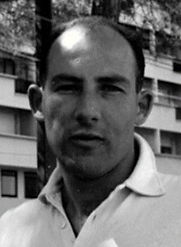
29-year-old Englishman, vice-champion F1 World Championship in 1955, 1956, 1957, and 1958. Last season, driving for the Vanwall team, Stirling Moss won the Grands Prix of Argentina, the Netherlands, Portugal and Morocco, establishing himself as the main contender for the title alongside Mike Hawthorn. However, luck was clearly not on his side, and after losing to the Scuderia leader by just one point, Stirling once again remained only second. Meanwhile, during the off-season, following the tragic death of Moss’s teammate Stuart Lewis-Evans, Vanwall boss decided to withdraw from Formula-1 racing, effectively leaving Stirling at a crossroads. Ultimately, Moss chose to join Rob Walker’s team, with which he had already tasted victory - and now he faces a new, even more ambitious challenge: to try and win the title driving for a privateer team.
Stirling Moss
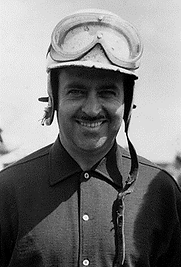
41-year-old Frenchman, who took 4th place in the 1954 and 1955 F1 World Championships. Maurice spent last season with Rob Walker's team and, driving a Cooper T45, once again made a name for himself by winning his second career victory in Monte Carlo. And although he finished only 7th in the overall standings, his brilliant performance on the legendary circuit left Walker in no doubt that the Frenchman was still in excellent form — and his contract was extended without hesitation for another season.
Maurice Trintignant